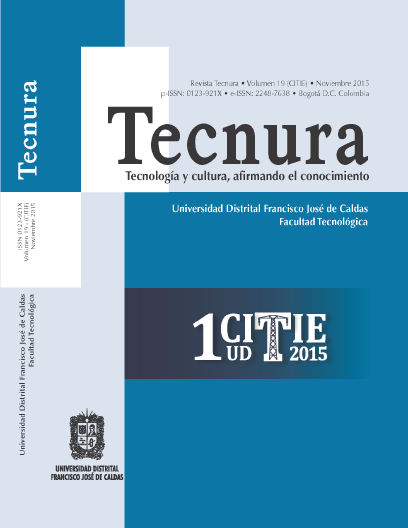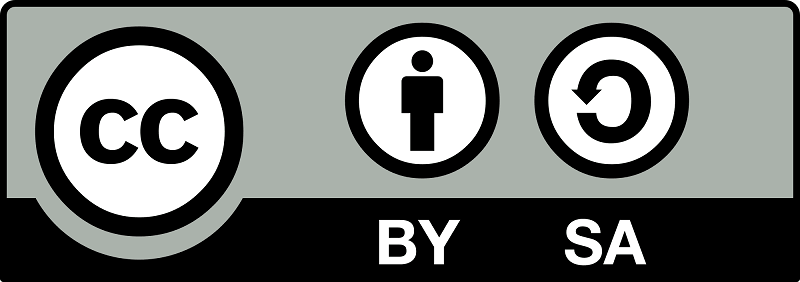DOI:
https://doi.org/10.14483/22487638.9620Publicado:
2015-11-13Número:
Vol. 19 (2015): CITIESección:
InvestigaciónProceso de estimación estocástico para la selección de fuentes de energía en una microrred eléctrica
Stochastic stimationfor energy selection sources in microgrids
Palabras clave:
Estimación Estocástica, Sistemas Markovianos, Microrredes, Gestión energética. (es).Palabras clave:
Stochastic Stimation, Markov Systems, Microgrids, Energy Management. (en).Descargas
Resumen (es)
En este artículo se muestran los parámetros a considerar en un algoritmo de estimación estocástico que hace uso de sistemas markovianos orientado a la predicción del estado futuro del sistema de generación de energía en una microrred, con el propósito de inferir la mejor opción que permita la selección de la fuente que genere energía a un grupo de cargas teniendo como parámetros de selección la curva de carga e indicadores que ponderan efectos ecológicos, económicos, disponibilidad y de la capacidad de suministro sobre un determinado valor de carga.
Resumen (en)
This paper shows several parameters to consider in a stochastic estimation algorithm uses Markov systems aimed at predicting the future state of the power generation system in a microgrid, in order to infer the best option that allows for selection the most appropriate source of energy from the load curve, this selection includes additionally weighted indicators ecological, economic, availability and supply capacity for a given value of load effects.
Referencias
Anderson, R. N., Boulanger, A., Powell, W. B., & Scott, W. (2011). Adaptive stochastic control for the smart grid. Proceedings of the IEEE, 99(6), 1098–1115. doi:10.1109/JPROC.2011.2109671
Atwa, Y. M., El-Saadany, E. F., Salama, M. M. a, & Seethapathy, R. (2010). Optimal Renewable Resources Mix for Distribution System Energy Loss Minimization. Power Systems, IEEE Transactions on, 25(1), 360–370. doi:10.1109/TPWRS.2009.2030276
Bakker, V., Bosman, M. G. C., Molderink, a., Hurink, J. L., & Smit, G. J. M. (2010). Demand Side Load Management Using a Three Step Optimization Methodology. Smart Grid Communications (SmartGridComm), 2010 First IEEE International Conference on, 431–436. doi:10.1109/SMARTGRID.2010.5622082
Bu, S., Yu, F. R., & Liu, P. X. (2011). Stochastic Unit Commitment in Smart Grid Communications. IEEE INFOCOM 2011 Workshop on Green Communications and Networking, 307–312. doi:10.1109/INFCOMW.2011.5928828
Clement-Nyns, K., Haesen, E., & Driesen, J. (2010). The impact of Charging plug-in hybrid electric vehicles on a residential distribution grid. IEEE Transactions on Power Systems, 25(1), 371–380. doi:10.1109/TPWRS.2009.2036481
Conejo, a J., Morales, J. M., & Baringo, L. (2010). Real-Time Demand Response Model. Smart Grid, IEEE Transactions on, 1(3), 236–242. doi:10.1109/tsg.2010.2078843
Guan, X., Xu, Z., & Jia, Q. S. (2010). Energy-efficient buildings facilitated by microgrid. IEEE Transactions on Smart Grid, 1(3), 243–252. doi:10.1109/TSG.2010.2083705
Han, S., Soo, H. H., & Sezaki, K. (2010). Design of an optimal aggregator for vehicle-to-grid regulation service. Innovative Smart Grid Technologies Conference, ISGT 2010, 1(1), 65–72. doi:10.1109/ISGT.2010.5434773
Hatami, S., & Pedram, M. (2010). Minimizing the Electricity Bill of Cooperative Users under a Quasi-Dynamic Pricing Model. Smart Grid Communications (SmartGridComm), 2010 First IEEE International Conference on, 421–426. doi:10.1109/SMARTGRID.2010.5622080
Ibars, C., Navarro, M., & Giupponi, L. (2010). Distributed Demand Management in Smart Grid with a Congestion Game. Smart Grid Communications (SmartGridComm), 2010 First IEEE International Conference on. doi:10.1109/SMARTGRID.2010.5622091
Kallitsis, M. G., Michailidis, G., & Devetsikiotis, M. (2010). A Framework for Optimizing Measurement-Based Power Distribution under Communication Network Constraints. 2010 First IEEE International Conference on Smart Grid Communications, 185–190. doi:10.1109/SMARTGRID.2010.5622039
Kishore, S., & Snyder, L. V. (2010). Control Mechanisms for Residential Electricity Demand in SmartGrids. Smart Grid Communications (SmartGridComm), 2010 First IEEE International Conference on, 443–448. doi:10.1109/smartgrid.2010.5622084
Liu, X. (2010). Economic load dispatch constrained by wind power availability: A wait-and-see approach. IEEE Transactions on Smart Grid, 1(3), 347–355. doi:10.1109/TSG.2010.2057458
Mohsenian-Rad, A. H., & Leon-Garcia, A. (2010). Optimal residential load control with price prediction in real-time electricity pricing environments. IEEE Transactions on Smart Grid, 1(2), 120–133. doi:10.1109/TSG.2010.2055903
Mohsenian-Rad, A. H., Wong, V. W. S., Jatskevich, J., Schober, R., & Leon-Garcia, A. (2010). Autonomous demand-side management based on game-theoretic energy consumption scheduling for the future smart grid. IEEE Transactions on Smart Grid, 1(3), 320–331. doi:10.1109/TSG.2010.2089069
Neely, M. J., Tehrani, a. S., & Dimakis, a. G. (2010). Efficient Algorithms for Renewable Energy Allocation to Delay Tolerant Consumers. Smart Grid Communications (SmartGridComm), 2010 First IEEE International Conference on, 1–10. doi:10.1109/SMARTGRID.2010.5621993
Ochoa, L. F., & Harrison, G. P. (2011). Minimizing energy losses: Optimal accommodation and smart operation of renewable distributed generation. IEEE Transactions on Power Systems, 26(1), 198–205. doi:10.1109/TPWRS.2010.2049036
Public Service Enterprise Group Incorporated. (2013). Historical Load Profiles Public Service Electric and Gas (PSE&G) of New Jersey United State. Retrieved from https://www.pseg.com/business/energy_choice/third_party/historical.jsp
Samadi, P., Mohsenian-Rad, A.-H., Schober, R., Wong, V. W. S., & Jatskevich, J. (2010). Optimal Real-Time Pricing Algorithm Based on Utility Maximization for Smart Grid. 2010 First IEEE International Conference on Smart Grid Communications, 415–420. doi:10.1109/SMARTGRID.2010.5622077
Sortomme, E., Hindi, M. M., MacPherson, S. D. J., & Venkata, S. S. (2011). Coordinated charging of plug-in hybrid electric vehicles to minimize distribution system losses. IEEE Transactions on Smart Grid, 2(1), 186–193. doi:10.1109/TSG.2010.2090913
Cómo citar
APA
ACM
ACS
ABNT
Chicago
Harvard
IEEE
MLA
Turabian
Vancouver
Descargar cita
Licencia
Esta licencia permite a otros remezclar, adaptar y desarrollar su trabajo incluso con fines comerciales, siempre que le den crédito y concedan licencias para sus nuevas creaciones bajo los mismos términos. Esta licencia a menudo se compara con las licencias de software libre y de código abierto “copyleft”. Todos los trabajos nuevos basados en el tuyo tendrán la misma licencia, por lo que cualquier derivado también permitirá el uso comercial. Esta es la licencia utilizada por Wikipedia y se recomienda para materiales que se beneficiarían al incorporar contenido de Wikipedia y proyectos con licencias similares.


